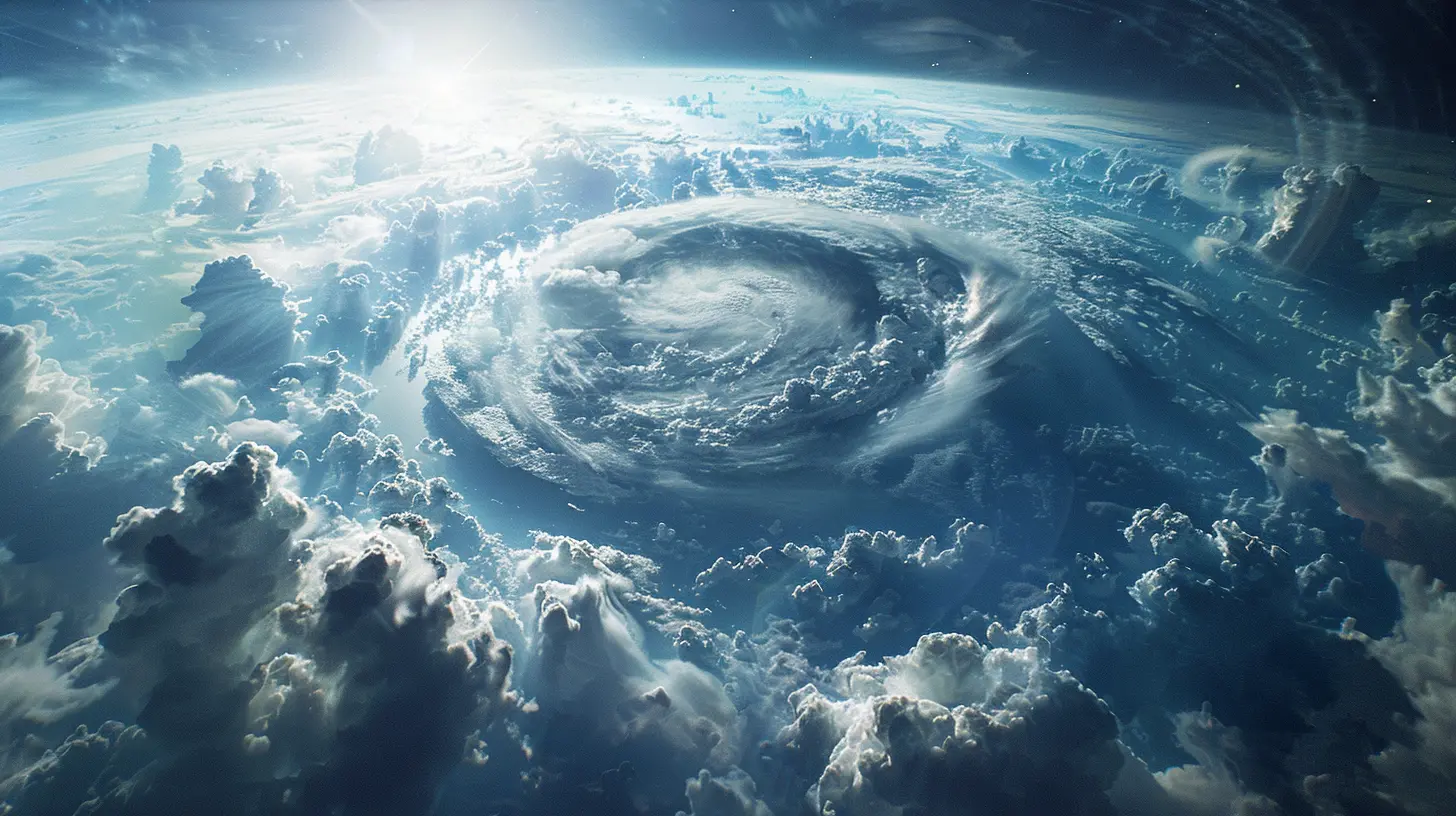Weather Systems and Their Role in Creating Immersive Games
28 September 2025
When was the last time you got caught in a game-world thunderstorm and thought, “Whoa, this feels real”? If you’ve ever played through a torrential downpour in Red Dead Redemption 2 or watched fog roll across the hills in Skyrim, you’ve experienced how weather systems can completely change the way we see and feel a game.
It’s not just eye candy. Weather systems can dramatically impact gameplay, amplify emotion, and bring worlds to life like never before. But creating these dynamic weather mechanics isn’t just about a few raindrops or some rumbling thunder. It’s a complex blend of visual artistry, technical wizardry, and clever game design that, when done right, creates pure magic.
Let’s break down how weather systems work and why they’re a game-changer (pun intended) in the world of immersive gaming.
Why Weather Matters in Gaming
Think about your favorite open-world game. Now imagine it without any change in lighting, no rain, no snow, no wind blowing through the trees. Pretty dull, right?Weather isn’t just a background aesthetic—it’s a core part of how we connect with virtual environments. Let’s face it: static environments can get boring fast. When the world breathes and shifts through dynamic weather, it feels alive.
Weather can:
- Set the tone or mood (rainy days feel gloomy, bright sunshine feels adventurous)
- Inject realism (especially in open-world or survival games)
- Impact gameplay (visibility, movement, enemy behavior)
- Keep players engaged (things feel fresh and unpredictable)
In short, good weather systems can make a virtual world feel like it’s got a soul.
A Brief History: From Sprite Rain to Full-Blown Storms
Gaming has come a long way from the days of pixelated blue lines falling from the sky to simulate rain. Early weather effects were more about decoration than immersion. Remember rain in older Pokémon games? It was charming but didn’t really change the experience.Fast forward to the present, and weather has evolved into something that interacts with the world and the player. Real-time weather cycles, dynamic lighting changes, sound design that mimics real-life storms—developers are going all-in.
Games like The Legend of Zelda: Breath of the Wild, Horizon Zero Dawn, and Ghost of Tsushima use weather systems so intricately, they alter the way you play, not just the way the game looks.
The Building Blocks of a Weather System
Creating immersive weather isn't as simple as slapping a rainy texture on your screen and calling it a day. Let’s peek behind the curtain to see what makes it tick:1. Environmental Effects
These are the visual flourishes that kick off the illusion—rain, snow, fog, dust, lightning, etc. Paired with real-time lighting systems and shaders, they tell your eyes, “Yes, this world is changing.”Ever noticed how puddles form during rain in some games? That’s dynamic weather at work, adapting the environment in real-time.
2. Sound Design
Don’t underestimate the power of sound. A distant rumble of thunder or the howling of wind can instantly shift the mood. Good sound design helps weather feel like it’s happening all around you, not just on screen.3. Physics Interaction
Rain should make surfaces slippery. Snow should crunch underfoot. Wind should affect how arrows fly. Physical responses to weather make the world more believable and interactive.4. Weather AI or Logic System
Modern games use complex logic trees, simulations, or even AI to determine when and how weather changes. Variables like location, elevation, time of day, and storyline events can all influence what weather unfolds.5. Gameplay Repercussions
This is where things get juicy. Weather shouldn’t just be pretty—it should matter. Rain can make stealth easier by masking sound. Fog can limit visibility and create tension. Windstorms can close off certain paths or knock down trees.Immersive? You bet.
How Weather Can Shape Gameplay
Let’s dig into a few concrete examples to show how weather doesn’t just dress the set—it directs the play.Stealth Mechanics
In games like Assassin’s Creed or Metal Gear Solid V, rain can help cover the sound of your footsteps. That means it’s easier to sneak around undetected. Foggy nights? They give you a perfect visual cover.Combat and Strategy
In The Legend of Zelda: Breath of the Wild, lightning storms can actually zap you if you’re holding metal gear. Genius, right? You have to adapt your loadout depending on the weather.Similarly, heavy winds may affect archery or projectile physics, forcing players to adjust their aim or plan differently.
Exploration and Travel
Snowy conditions can slow movement, reduce stamina, or block paths altogether. In Red Dead Redemption 2, trudging through snow feels heavy and exhausting, just like in real life.Extreme heat or sandstorms might require special gear or provide limited vision. These challenges turn basic movement into a puzzle or even a threat.
Survival and Resource Management
In survival games like The Long Dark or Green Hell, weather can be the difference between life and death. A cold front means hypothermia. A rainstorm can put out your campfire.Planning for weather becomes strategy. And strategy increases immersion.
Emotional Storytelling Through Weather
Weather doesn’t just affect gameplay—it speaks volumes emotionally. Game developers often use weather as a storytelling device. Much like movies, weather in games can reflect or enhance the narrative:- A heart-wrenching death scene during a downpour? Feels heavy.
- A bright sunrise after a long battle? Feels hopeful.
- Thunder and lightning as you approach the villain’s lair? Feels epic.
Games like The Last of Us Part II or Ghost of Tsushima use rain, wind, and lighting to draw emotional responses and underline critical story beats.
That’s next-level storytelling: when the sky itself is a character.
Procedural vs. Scripted Weather: Which is Better?
There are two main approaches to weather in games:Scripted Weather
This is hand-designed and often tied to story progression. Think of a specific scene in a game that always takes place in a storm, no matter what.Pros:
- More control over tone and pacing
- Perfect for cinematic moments
Cons:
- Less replayability
- Can feel predictable
Procedural/Dynamic Weather
This is when weather changes naturally based on parameters set by the developers. In games like Skyrim, the weather feels random (but it’s not—it’s driven by complex systems).Pros:
- Feels alive and reactive
- Offers different experiences each playthrough
Cons:
- Harder to control narrative tone
- Can sometimes disrupt story flow
A hybrid approach is often the sweet spot—let random weather reign but bring in the big guns when the story needs it.
Challenges in Developing Weather Systems
Dynamic weather isn’t just cool—it’s also a massive pain to implement. Here’s why developers lose sleep over it:- Performance Issues: Real-time weather eats up resources. Add in particle effects, reflections, and physics, and your framerate may suffer.
- Balancing Gameplay: If it’s always raining, stealth lovers may have too easy a time. If fog shows up too much, players can feel frustrated.
- Consistency and Believability: Weather needs to make sense. A snowstorm in the desert? That better have a lore explanation.
Still, despite the headaches, the payoff is often worth it.
Noteworthy Games With Stellar Weather Systems
Some titles have raised the bar for weather realism and immersion. Here are a few standouts:Red Dead Redemption 2
Arguably the king of environmental immersion. Rain forms puddles, trees sway with gusts of wind, and snow deforms underfoot. It’s not just real-looking—it’s felt.The Legend of Zelda: Breath of the Wild
Weather isn’t just for show; it’s part of the challenge. Rainy rocks become slippery. Thunderstorms require tactical gear changes. Every drop matters.Ghost of Tsushima
The wind isn’t just weather—it’s navigation. Kurosawa-level cinematography through weather design marries aesthetics with gameplay seamlessly.The Long Dark
A pure survival experience where weather dictates everything. Cold snaps, whiteouts, and aurora events make for true edge-of-your-seat gameplay.The Future of Weather in Games
As hardware gets more powerful and engines like Unreal 5 push boundaries, weather systems will only get crazier. Expect to see:- Hyper-realistic cloud systems and volumetric weather
- AI-driven weather that adapts to your playstyle
- Cross-region systems where weather “travels” like it does in real life
- Emotional and narrative-based changes based on player decisions
One day, we might even see shared live-world weather in online games—imagine a global storm sweeping across servers in real-time.
Final Thoughts
Weather systems are no longer a “nice-to-have”—they’re a powerful tool in a developer’s toolbox. Whether it’s for setting tone, enhancing realism, or actually shaping gameplay, weather is a living, breathing part of modern gaming worlds.So the next time you're crossing a foggy bay in a digital world, or huddling for cover from a virtual blizzard, take a second and appreciate just how far we’ve come. Because in the world of gaming, it turns out that the weather really matters.
all images in this post were generated using AI tools
Category:
Realism In GamesAuthor:

Lana Johnson
Discussion
rate this article
1 comments
Selkie McWilliams
Weather in games: like a bad haircut—sometimes it rains, sometimes it shines, and it’s never boring!
October 10, 2025 at 3:17 PM

Lana Johnson
Thank you! That's a great analogy—just as a haircut can transform your look, dynamic weather can completely change the atmosphere and experience of a game.


